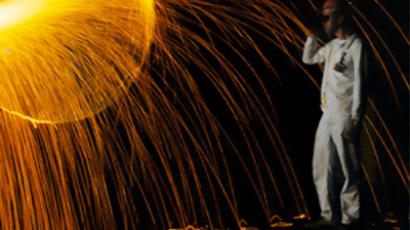Sinking of 'invulnerable' sub: 20 years later
Twenty years ago on April 7, the Soviet nuclear submarine K-278 Komsomolets caught fire and sank in the Norwegian Sea.
The Komsomolets was the only submarine in the world which could descend more than one thousand metres, making it invulnerable to other submarines and anti-submarine ships. Powered by a nuclear reactor, it was armed with twenty-two missiles and torpedoes, including two with nuclear warheads.
Igor Kalinin was a hydroacoustics engineer at Komsomolets. He recalls the tragic day of the accident:
“I was resting in my cabin when the emergency signal sounded. As soon as I heard it, I ran to my post, and just like every other member of the crew, I began fighting for the survival of our vessel.”
Igor’s friend Andrey Makhota was a remote control engineer.
“I was right near the reactor, and heard its emergency shutdown system activate. I can confirm that it had fully shut down to prevent any possible leak of radioactivity,” he said.
It took just a few hours for the fire, fed by compressed air, to spread through bulkhead openings and sink the submarine which was as long as a football field. 24 crew members survived the accident, while 42 others perished through smoke poisoning and exposure to the ice-cold waters of the Norwegian Sea.
The captain was among the five people who remained.
“When she was still afloat, our captain climbed out on the deck and could have easily jumped into the water like we did. But instead he looked at the skies and went back in to those who were stuck in the sinking sub,” Igor Kalinin recalls.
Roza Markova lost her son in the tragedy. She now heads a non-profit group which unites the survivors, relatives, and loved ones of submarine disasters like the Komsomolets.
“The 7th of April was recently declared a day of remembrance for all crew of submarines who died on duty. There have been 20 similar tragedies in the Soviet navy, but in those times, we were not allowed to talk about them,” she said.
At first, it was planned to raise the Komsomolets to the surface, Russia and the Netherlands even had a joint plan of operation. But a series of inspections revealed that the scale of the damage it received when it hit the bottom was so massive that it was more dangerous to raise it than to leave it resting.
Over the last 20 years, the Komsomolets has been examined more than 70 times. The vessel was found to be heavily damaged, but after various tests, and the sealing of some holes, Russian authorities said the sub – along with its two nuclear warheads and a nuclear reactor – posed negligible environmental danger.
Twenty years later, the sunken submarine remains more than one mile bellow the surface in the depths of the Norwegian Sea.













